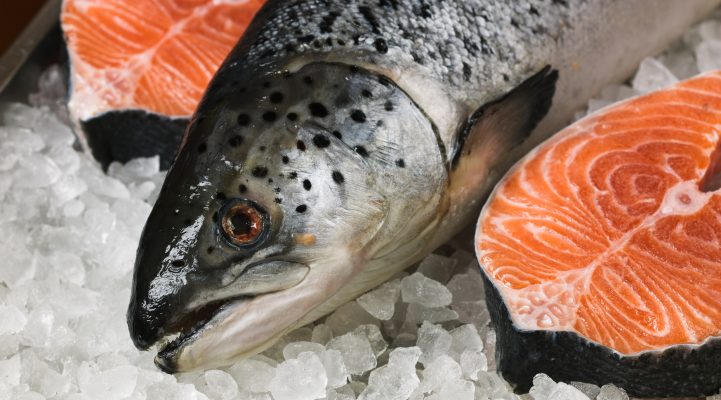Fresh fish and shellfish not only taste great, they’re also extremely good for you! But, you have to be very careful how you store fish to ensure it retains its ‘just caught’ freshness. Despite the truth of the old adage: ‘the best place to put fresh fish is straight in the pan’, there will be times when you want to keep your fish and shellfish for a few days before cooking them.
Since fish is extremely healthy, it’s not surprising that nutritionists recommend we eat it at least once a week! However, fresh fish will not remain fresh for long unless it’s refrigerated. With a Liebherr fridge, you have everything you need to store your fish perfectly! But, even when you are refrigerating fish, there are still several things that you need to bear in mind…

Pay attention to freshness when buying
The fresher fish is when you buy it, the longer it can be kept at home. So just how do you know if fish is really fresh?
- The fish should be almost odourless, at most smelling of the sea or iodine. The older a fish, the fishier it smells.
- A shiny, firm and elastic surface appearance is a sign of freshness.
- The condition of the eyes is revealing – a really fresh fish has bulging, bright and translucent eyes. Duller, flatter and greyer eyes indicate an older fish.
- The inside of the gills should be bright red and shiny. The more yellowish/brownish or the more detached they are, the longer ago the fish was caught.
- If possible, press down firmly on the skin with your index finger. Fresh fish is firm and springs back to shape as soon as you remove your finger, leaving no indent. Flatfish species should not flop when picked up.
- Ideally, your retailer should store fish in ice, not on the ice, so that it is evenly cooled.
Storing at the right temperature is half the battle
In general, microorganisms affect the shelf life of food, and refrigeration slows the activity of microorganisms, lengthening food’s shelf life – and this is also true for fish. However, conventional fridges are often too warm for refrigerating fish and shellfish, which are best-stored temperatures of between -2°C and 0°C. Therefore, fresh fish will only keep for a day when stored in a conventional refrigerator. Of course, you could lower the overall temperature in your refrigerator, but this would make it too cold for most of the other foods. The best way forward, in this case, is to fill a lidded container with ice cubes and store the fish in that. In this way, you can keep fish in a conventional refrigerator for one or two days longer.
Things are somewhat more convenient for the owners of BioFresh, or better still, BioFresh-Plus appliances. The temperature in the BioFresh safes is maintained at around 0°C, which immediately doubles the shelf life of fish to two days.
Even better, fresh fish will keep for up to four days in the BioFresh-Plus compartment, at -2 °C. BioFresh and BioFresh-Plus appliances are absolutely ideal for anyone who enjoys eating fresh fish or seafood on a regular basis.
Storing larger quantities
Amateur anglers often want to freeze larger quantities of fish. To do so, the fish must be extremely fresh and, before freezing, should be cleaned, washed and then dried to remove any excess water. Ideally, the fish should be prepared for later consumption as soon as possible after being caught. If you have caught the fish yourself, you should gut and/or fillet them, then pre-freeze them on a tray without packaging to prevent them from sticking together. Afterwards, the fish or fillets can be put in freezer bags for compact storage and fully frozen.
Choosing the right type of airtight packaging is also important. Freezer bags are ideal for this and perfect storage conditions are achieved if the fish is vacuum packed. The packaged fish should be labelled with the storage date, weight, type of fish and intended use.
For larger quantities of fish, the Liebherr SuperFrost function should be activated before storage. This quickly lowers the temperature in the freezer or chest freezer, giving a coldness boost, so that the freezer compartment temperature does not rise above its set limit when large quantities of unfrozen produce are introduced.
Please note: frozen fish should not be stored for more than 6 to 12 months (depending on its fat content), the reason being that the fat in fish can become rancid over time.
How to defrost fish
Frozen fish is best defrosted slowly in a refrigerator. If being used in soups or stews, fish can be cooked once half-thawed. Fish that will be oven-cooked or pan-fried must be completely defrosted before use.
If you have any questions about BioFresh-Plus, simply write to us! Use the comment function below this post or start/join in discussions with us on Facebook, Twitter or Instagram!